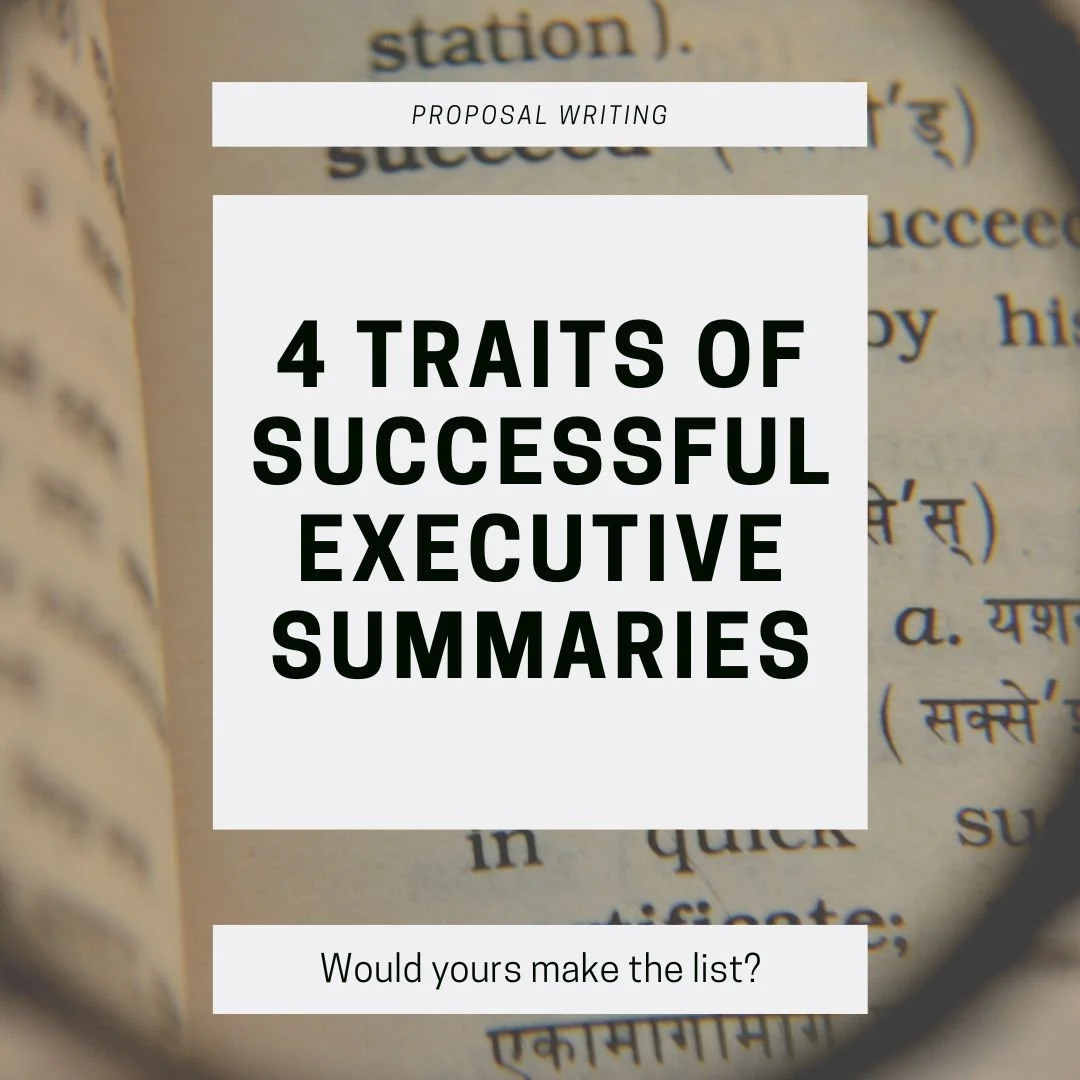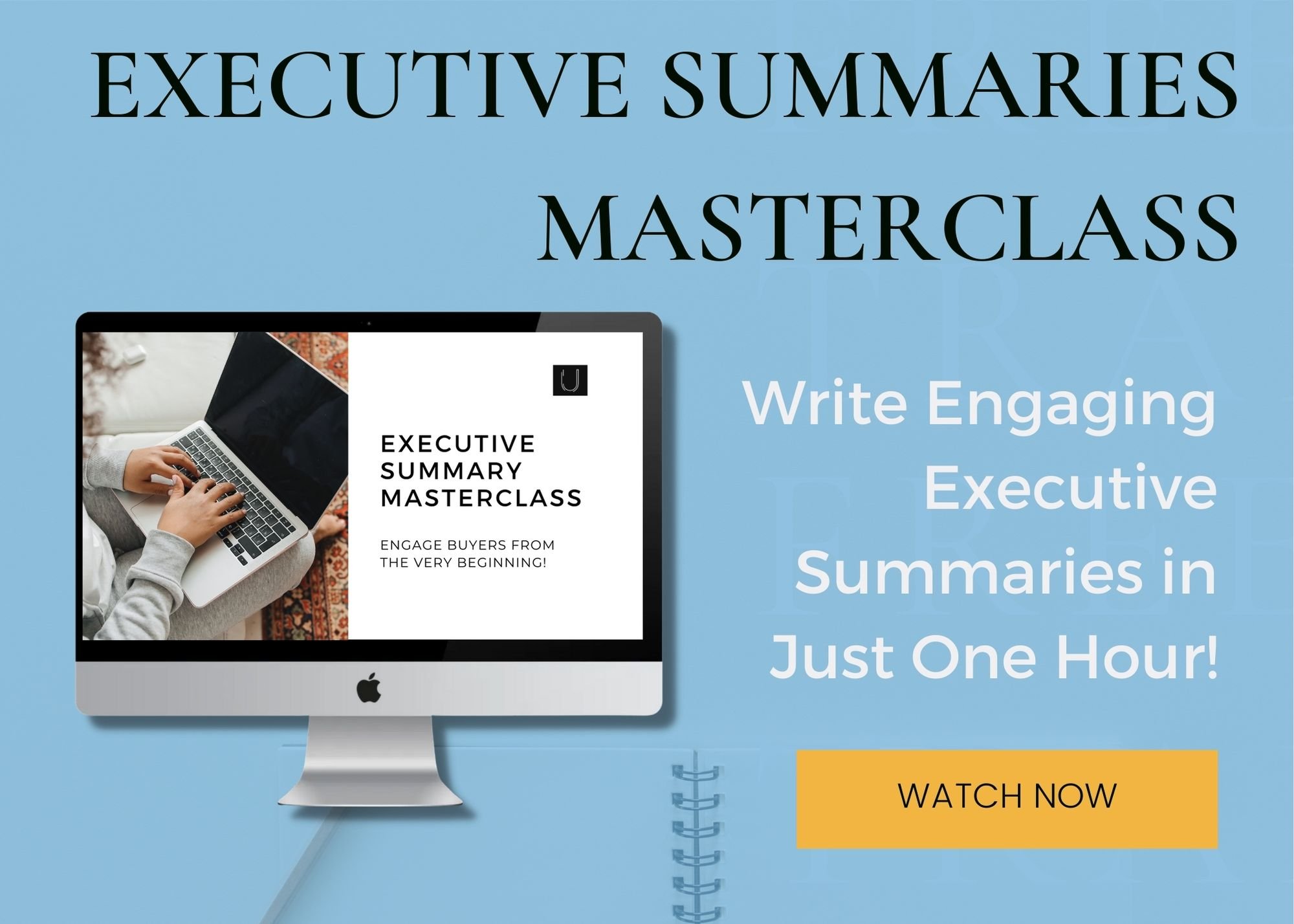4 Traits of Successful Executive Summaries
Executive Summaries are one of the most dreaded RFP sections. How do you summarize an entire proposal in just one page? (You don’t.) Will it even be read?
But once you figure out how to write Executive Summaries, they will likely become your favorite section! This part of the proposal is often the most read, and because of that, it requires a little more creativity and focus than other parts of the proposal. To help you on this journey, check out the four key traits of successful Executive Summaries below.
Begins with the Customer
Far too many Executive Summaries start with the selling company’s name and an overview of what they do or the solution they’re providing.
This is not how to write a successful Executive Summary.
Instead, begin this section with the customer’s challenge. This helps to grab the attention of the buyer and also shows that you understand the problem, which makes your pitch to solve it more credible.
2. Tells a Story
Storytelling is one of the best ways to connect with readers across any type of sales. Since your proposal (and Executive Summary) is a written sales pitch, incorporating storytelling elements will build a stronger connection and create a more successful proposal. As a standalone section, the Executive Summary is the perfect place to have a mini story within your proposal that shows exactly how you can help the buyer solve their challenge.
Need help adding using storytelling in your proposal? Check out our training for the complete 7-part framework.
3. Highlights Differentiators
An Executive Summary is the powerhouse of your proposal–it’s the one section that nearly everyone reads. Because of this, you need to incorporate your key points into this one-page document so everyone understands the benefits of your solution without having to read the entire proposal.
Instead of summarizing your overall solution, which may have similarities to other bidders, focus on highlighting anything unique about your offer that will appeal to the buyer. Look back on your notes from sales meetings to truly understand what’s most important and then use those insights to show how you help achieve those goals.
4. Clear and Concise
When an RFP requires an Executive Summary, it can be tempting to paste in a few pieces of boilerplate and call it a day.
But when you do that, you’re not only missing out on a chance to connect with the buyer, but you’re also making your proposal more difficult to read.
Buyers can tell when you’ve pasted in a few pieces of boilerplate, and when that happens, they skim through those sections, searching for items to check off their list.
The best Executive Summaries grab buyers’ attention and inspire them to keep reading, not skimming, your proposal. To do this, choose 3-5 main points you want to emphasize in the Executive Summary and focus only on those. Ideally write this from scratch, but if you don’t have time, cut out any sentences or paragraphs from your boilerplate that deviate from the main points. This will make your Executive Summary clearer and easier to review–and inspire confidence in the rest of your proposal.
Next Steps for Executive Summaries
Ready to write Executive Summaries that buyers love but not sure how to get started? Then the Executive Summaries Masterclass is for you!



